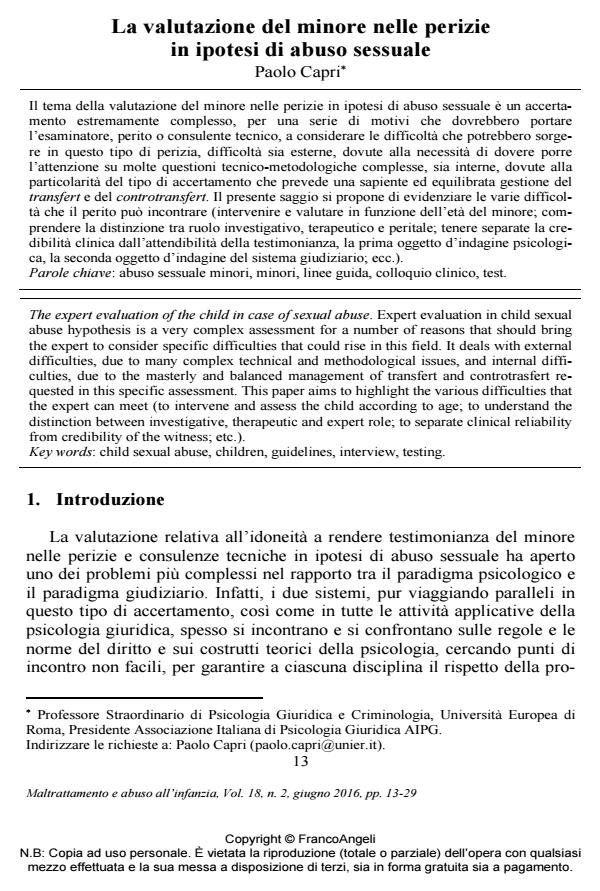The expert evaluation of the child in case of sexual abuse
Journal title MALTRATTAMENTO E ABUSO ALL’INFANZIA
Author/s Paolo Capri
Publishing Year 2016 Issue 2016/2
Language Italian Pages 17 P. 13-29 File size 214 KB
DOI 10.3280/MAL2016-002002
DOI is like a bar code for intellectual property: to have more infomation
click here
Below, you can see the article first page
If you want to buy this article in PDF format, you can do it, following the instructions to buy download credits

FrancoAngeli is member of Publishers International Linking Association, Inc (PILA), a not-for-profit association which run the CrossRef service enabling links to and from online scholarly content.
Expert evaluation in child sexual abuse hypothesis is a very complex assessment for a number of reasons that should bring the expert to consider specific difficulties that could rise in this field. It deals with external difficulties, due to many complex technical and methodological issues, and internal difficulties, due to the masterly and balanced management of transfert and controtrasfert requested in this specific assessment. This paper aims to highlight the various difficulties that the expert can meet (to intervene and assess the child according to age; to understand the distinction between investigative, therapeutic and expert role; to separate clinical reliability from credibility of the witness; etc.).
Keywords: Child sexual abuse, children, guidelines, interview, testing
- Memoria e suggestionabilità interrogativa nei minori testimoni in casi di presunto abuso sessuale Monia Vagni, Tiziana Maiorano, Daniela Pajardi, in MALTRATTAMENTO E ABUSO ALL'INFANZIA 2/2017 pp.141
DOI: 10.3280/MAL2017-002008
Paolo Capri, La valutazione del minore nelle perizie in ipotesi di abuso sessuale in "MALTRATTAMENTO E ABUSO ALL’INFANZIA" 2/2016, pp 13-29, DOI: 10.3280/MAL2016-002002